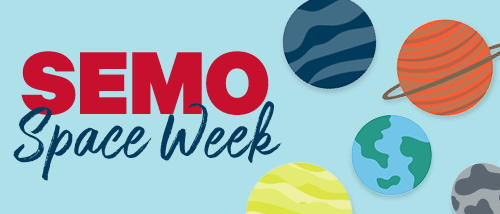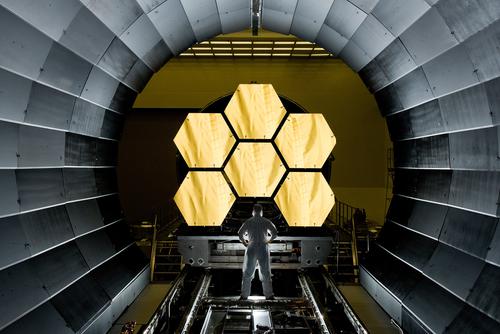Join SEMO November 3-7 for Space Week—a campus and community celebration of astronomy, exploration, and the science that connects us to the cosmos.
From planets and stars to galaxies and beyond, Space Week invites the community to look up, discover, and experience the wonder of space through engaging talks, stargazing sessions, and interactive activities. This Space Week will be the first with the new Vollink Family Observatory installed on SEMO's campus spring 2025.
James Webb Space Telescope
Webb is the largest and most complex space science telescope ever built – the premier observatory of the next decade. This international mission, led by NASA in partnership with the European and Canadian space agencies, launched in December 2021.
Schedule of Events
Monday, November 3, 2025
Lecture: "History of Observation at SEMO" from Peggy Hill, Joseph Murphy, & Pam Mills
- Location: Johnson Hall 200
- Time: 6 - 7 p.m.
Join us for an evening that turns back the clock to explore the origins of astronomical observing at SEMO and see just how far we’ve come!
Tuesday, November 4, 2025
Lecture: "Gateways to Life, Mystery, and Exploration" from Jerry Landewe
- Location: Rhodes Hall 121
- Time: 6 – 7 p.m.
Wednesday, November 5, 2025
Lecture: "Asteroids, Comets, and Interstellar Objects, oh my!" from Christina Adair
- Location: Rhodes Hall 121
- Time: 6 - 7 p.m.
Thursday, November 6, 2025
Astronomy Club Trivia Night
- Location: Rhodes 121
- Time: 6 - 7 p.m.
Night Sky Observation
- Location: Vollink Family Observatory
- Time: 7 – 10:30 p.m.
Join the SEMO Astronomy Club for a fun night of trivia with space-themed prizes in Rhodes 121 at 7 p.m. to be followed with a night of stargazing (weather permitting) at the Vollink Family Observatory.
Friday, November 7, 2025
Lecture: "The Threats to Dark & Quiet Skies: Campus SHINE and beyond" from Vayujeet Gokhale
- Location: Rhodes 121
- Time: 6 - 7 p.m.
The night sky is under threat. Light pollution from LEDs has increased 10% annually, while satellites in low Earth orbit have jumped from 2,000 to nearly 10,000 in just a decade. This talk will explore how light pollution and satellite crowding affect astronomy and wildlife, and highlight how the Campus SHINE program is uniting students, staff, and faculty to promote smarter outdoor lighting.
Join us to discover how you can help protect the night sky and make a real difference in preserving our view of the stars for future generations.
Cape Girardeau, MO 63701

